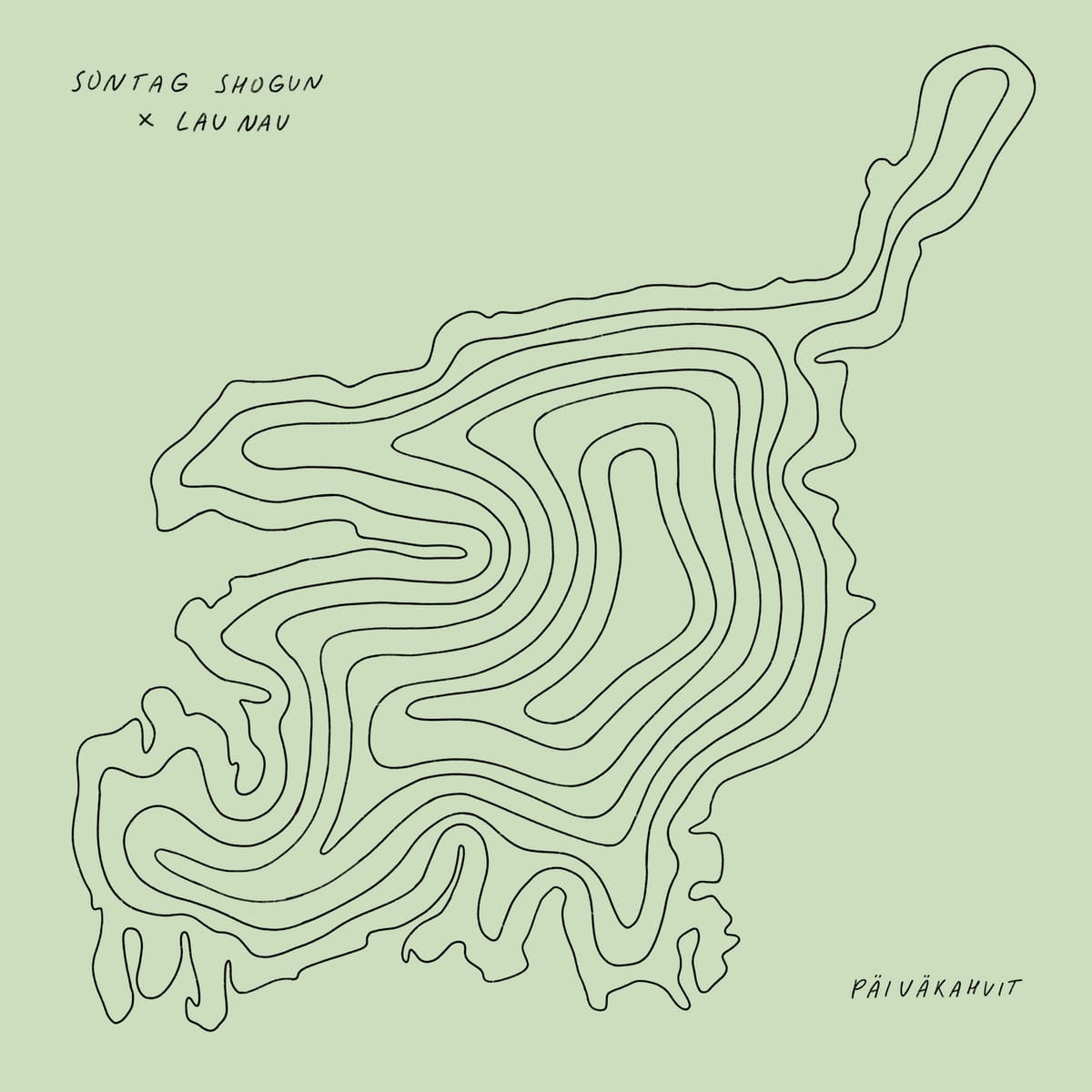Päiväkahvit and the Patience of Time
The word "outtakes" poisons the well before we even begin listening. It suggests material that wasn't quite good enough, the songs that didn't make the cut—creative leftovers relegated to the margins. But Sontag Shogun and Lau Nau's Päiväkahvit demands we abandon this framework entirely. What we're hearing isn't the detritus of a recording session, but material that simply wasn't ready for its moment until now.
Päiväkahvit—Finnish for "afternoon coffee"—emerges from the same 2019 Kimitoön island sessions that produced Valo Siroutuu (The Light Scatters), but it arrives in a fundamentally different world. Where its predecessor offered urgent comfort during the early pandemic years, providing vicarious connection to place and nature when both felt impossibly distant, this new collection operates on a different temporal frequency. It's not morning coffee, designed to activate and energize, but that contemplative afternoon cup—centering, reorienting, asking for a different kind of attention.

The genius of Päiväkahvit lies in how it embraces this shift. These aren't songs that were rejected from Valo Siroutuu for lacking quality; they were waiting for the right conditions to be properly received. In 2022, we needed the immediate healing that Valo Siroutuu provided. By 2025, having weathered additional years of tectonic social and political changes, we're ready for something more pensive, more patient.
Consider the children's voices that appear throughout both albums—those spontaneous expressions of joy recorded during the island sessions. In 2019, they were simply environmental elements, part of the natural soundscape. By now, those children are five years older, transformed from carefree island adventurers into adolescents navigating a world that has fundamentally shifted around them. Their preserved voices have become time capsules, carrying not just innocence but the weight of everything that's happened since. This temporal distance adds gravity to what might have once felt merely pastoral.
The album's structure reflects this maturation. Rather than segregating the collaborative reworks into a separate section, Päiväkahvit weaves interpretive pieces by Fabi Taddal, Amulets, Jeremy Young, and The Post Dukes throughout the original material. These aren't remixes in the traditional sense, but conversations across time—contemporary artists responding to recordings that have been aging and accumulating meaning for half a decade. The result flows like "fluid conversation," as one reviewer notes, creating something that transcends the typical album-plus-remix format.
This approach reveals something crucial about how creative work exists in time. The original Valo Siroutuu sessions weren't a single, completed artistic statement that was then divided into worthy and unworthy material. They were more like a forest casting seeds—some grew immediately into the trees we needed then, while others required different soil, different seasons, different light to flourish.
The title itself guides us toward the proper listening posture. Päiväkahvit evokes that specific Nordic café culture where afternoon coffee becomes a ritual of presence rather than productivity. Think of sitting in a Helsinki Fazer Cafe with a pastry, watching light change through windows, letting time move at its own pace. This isn't background music; it's music that asks for what Pauline Oliveros called "deep listening"—that quality of embodied attention where you're not analyzing or categorizing, but simply present to sound as it unfolds. The album rewards this kind of patient, open-eared engagement, revealing layers and relationships that only emerge when we resist the urge to immediately process and move on.
This distinction becomes even more apparent when considering how such delicate work translates to live performance. The suspended, dream-like quality that defines both albums—what might be called "time locked away from time"—struggles to survive in typical venue settings. Deep listening requires not just quiet, but a particular quality of acoustic and psychological space where attention can settle and expand rather than constantly defend itself from distraction. These recordings were made for intimate environments and patient ears, not for competing with the ambient noise of bars or the expectations of traditional concerts.
Päiväkahvit ultimately argues for a more patient relationship with creative work. In our rush to categorize and evaluate, we risk missing how some art needs time to reveal its true nature. These songs weren't waiting in some creative purgatory; they were composting, accumulating the historical weight that would eventually make them essential rather than optional.
The album's success lies not in rescuing overlooked material, but in recognizing when that material has found its proper moment. As we move further from the immediate crisis that made Valo Siroutuu feel so urgent, we need different kinds of comfort—more reflective, more accepting of complexity and ambiguity. Päiväkahvit provides exactly that: a companion for afternoon contemplation, proof that some of the most meaningful art comes not from the first boat leaving the island, but from the second vessel carrying more pensive cargo.
In the end, the album reminds us that creative work has its own relationship to time, independent of our need to immediately classify and consume it. Sometimes the most generous thing we can do is wait—for the right moment, the right mood, the right historical distance. Päiväkahvit is what that patience sounds like when it finally pays off.